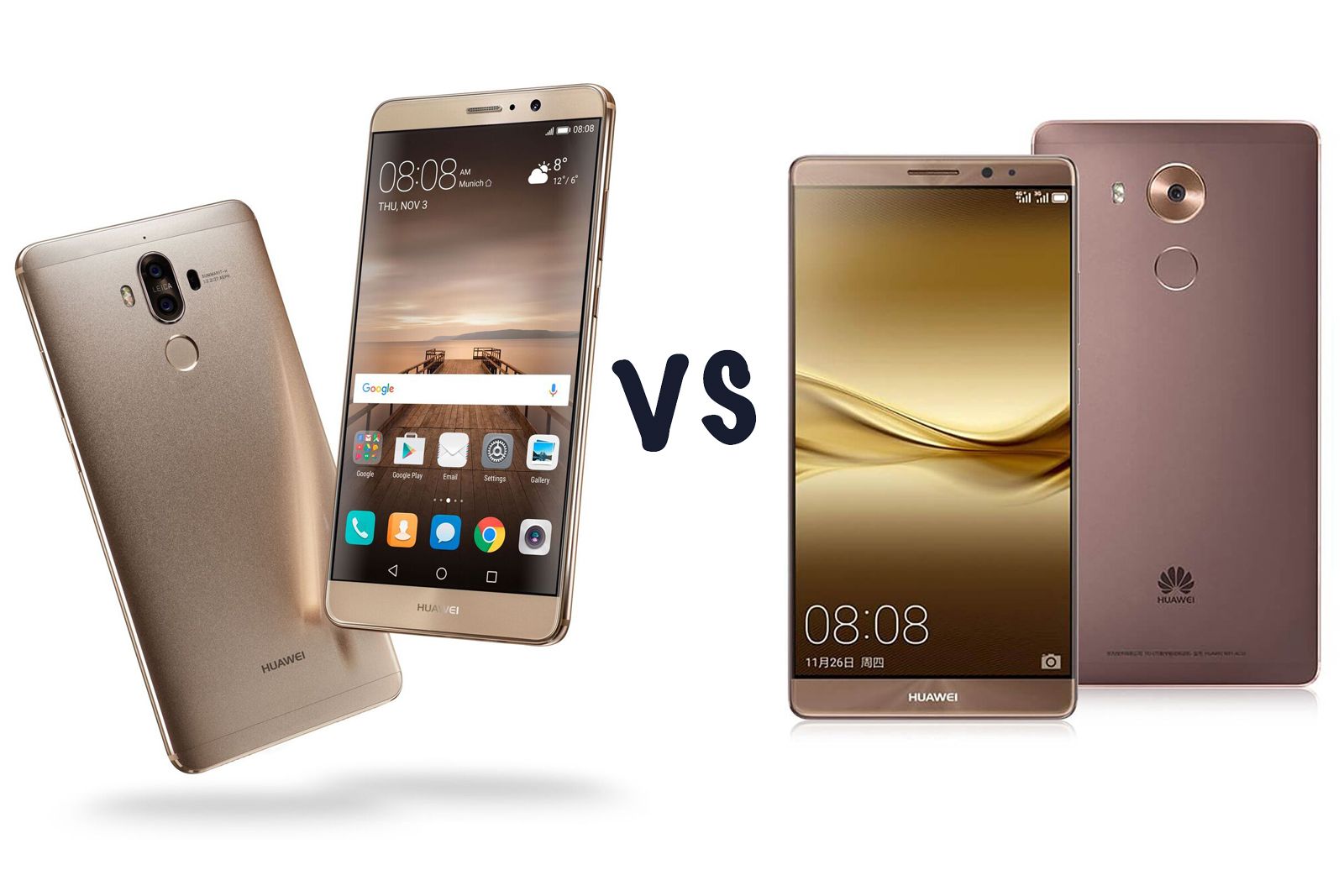Why hello there new big phone. Huawei has announced the Mate 9, its large-scale Android device for 2016, in an era when big phones are increasingly popular.
The Mate 8 was well received when released in 2015, albeit tricky to obtain in the UK. Will the newer Mate 9 make a bigger dent in the market? And what sets these two big-screen phones apart?
Huawei Mate 9 vs Mate 8: Design
- Both devices measure 7.9mm thick
- Same metal body design with chamfered edges
At first glance there's barely a difference between the Mate 8 and Mate 9 when faced front-on. They feature the same metal body design and chamfered edges, but look closer and there are subtle differences.
The Mate 9 is marginally smaller, measuring 156.9 x 78.9mm compared to the Mate 8's 157.1 x 80.6mm. That's because its screen size is 5.9-inches, rather than 6-inches like the Mate 8. In the hand nobody is going to tell the difference though, because half a millimetre can't be felt. Both handsets have the same 7.9mm thickness.
Mate 9 colours are limited to so-called Ceramic White or Moonlight Silver (the latter with a black bezel front) in the UK. Other territories will receive Space Grey, Champagne Gold and Mocha Brown.
Huawei Mate 9 vs Mate 8: Display
- Mate 8 has 6-inch 1920 x 1080 pixel IPS LCD display
- Mate 9 has 5.9-inch 1920 x 1080 pixel IPS LCD display
A surprise specification is that the Mate 9 doesn't increase the screen resolution, as was much rumoured. It does reduce its size ever so slightly though with a 5.9-inch display compared to a 6-inch display, as we mentioned above.
Both phone's screens are 1920 x 1080 resolution IPS LCD panels, sporting 2.5D glass, which has a subtle curve to its edge and sits neatly in the design.
The pixel density in the Mate 8 is 368ppi; it's a slightly higher 373ppi in the Mate 9 given the minor screen size reduction. You won't notice this by eye.
Huawei Mate 9 vs Mate 8: Cameras
- Mate 9 introduces dual cameras, 27mm f/2.2 equivalent
- Leica partnership, 12MP colour and 20MP B&W sensors
Flip the Mate 9 over and you'll see its biggest difference compared: dual cameras, not just the single camera of the Mate 8.
Similar to the smaller P9 smartphone from earlier in 2016 these are colour and black & white sensors, with the established Leica partnership ongoing. The main difference between P9 and Mate 9 is that the same 12-megapixel colour sensor is paired with a higher-resolution 20-megapixel B&W sensor (it was also 12-megapixel in the P9).
Both cameras peer through 27mm f/2.2 (equivalent) lenses, stacked vertically. The apparent reason for the resolution increase is for "optical zoom" - but as the optics are fixed, this is a mistruth, the Mate 9 can only digitally zoom via its pinch-based software integration.
The Mate 9 also introduces 4K video capture with H.265 compression, up from the Full HD capture of the Mate 8.
Huawei Mate 9 vs Mate 8: Hardware and power
- Mate 8 has Kirin 950 octa-core processor (4x 2.3Ghz A72 + 4x 1.8Ghz A53), 4GM RAM, Mali-T880 MP4 GPU
- Mate 9 has Kirin 960 octa-core processor (4x 2.4Ghz A73 + 4x 1.8Ghz A53), 4GB RAM, Mali-G71 MP8 GPU
The Mate 9 also houses the latest Kirin 960 chipset, which on paper might not sound a lot more powerful than the Mate 8's Kirin 950 chipset, but the new phone's big boost comes in the form of graphics.
Indeed the Mate 9 has triple the graphics performance of the Mate 8 thanks to the new Mali G71 GPU, which is sourced from ARM. With framework optimised for Vulkan, this platform is far more responsive and should make for a smoother experience.
There's more going on behind the scenes too. The Mate 9 and new Kirin chipset combine hardware and a new intelligent algorithm to learn your usage over time and prioritise the importance and priority of apps to avoid slowdown in short- and long-term scenarios. Huawei calls it a very Apple-sounding iAware.
Huawei Mate 9 vs Mate 8: Battery
- Both models feature 4,000mAh non-removable cells
- Mate 9 adds USB, SuperCharge fast-charging and dynamic charging protection
One of the Mate 8's best features is its huge 4,000mAh battery capacity, providing two days of battery life. That same cell has returned in the Mate 9, but with the addition of USB-C and fast charging - or what Huawei is calling SuperCharge.
SuperCharge works by lowering the voltage (to around 4.5V) and upping the current (to 5A) so the battery can be charged in double-quick time - some 50 per cent quicker than the Mate 8 - meaning just 30-minutes at the plug could see the Mate 9 have almost 60 per cent charge.
The Mate 9 also introduces a dynamic charging mechanism, meaning the phone can adapt the current based on the source and cable provided. There's a five-gate protection system within the phone to ensure it doesn't overheat. This, in essence, is Huawei pointing a big middle finger to Samsung, following the Note 7 fireball debacle.
Huawei Mate 9 vs Mate 8: Software
- Mate 9 introduces EMUI 5.0 software
The last piece of the Mate 9 puzzle is new software. There's Android 7.0 at its core, with the company's latest re-skin, Emotion UI, found here in EMUI 5.0 form.
EMUI 5.0 is all about being cleaner, whiter, simpler to navigate and drops the over complex colours and themes of the Mate 8.
Neither phone supports Force Touch - the deep press touchscreen technology - but the EMUI 5.0 software can support this feature going forward, perhaps for future devices.

